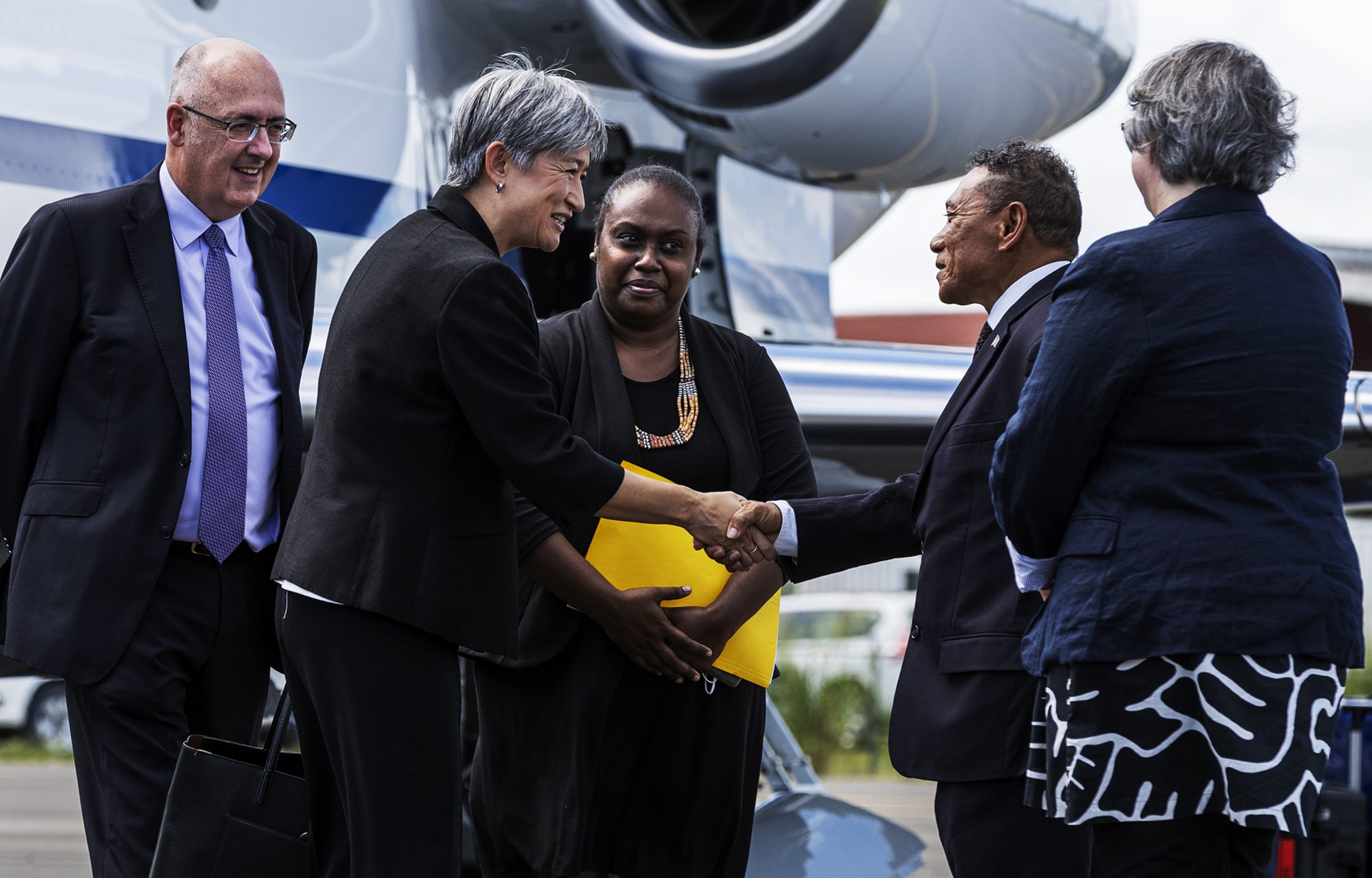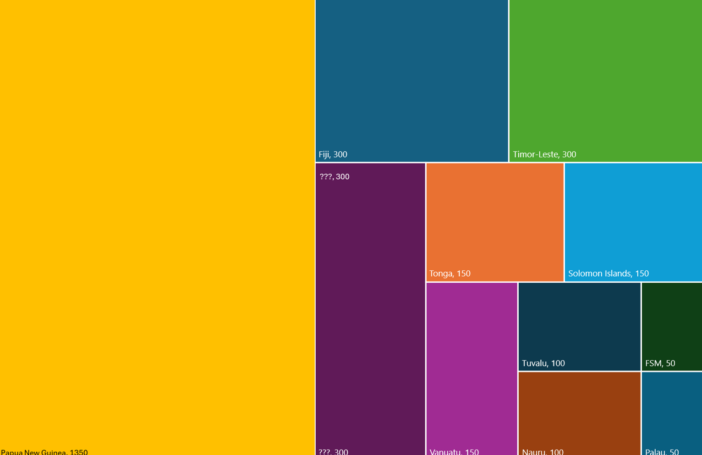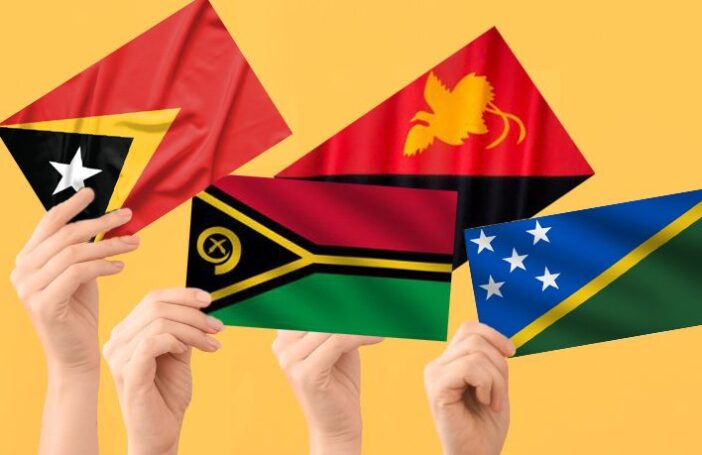Australian Foreign Minister Penny Wong was putting it mildly when she noted in her Solomon Islands press conference in June that “there’s been a positive response” to the new Labor government’s confirmation of its election campaign announcement that it would introduce a new permanent residency visa category for the Pacific, the Pacific Engagement Visa (PEV). 3,000 visas are to be issued annually via a lottery with country-specific quotas, commencing in July 2023.
Naturally, there has been lots of interest in how the quotas will be set. Minister for the Pacific Pat Conroy has already announced that visas will be allocated on a pro rata basis, which means that bigger countries should have a higher quota. Another clarification Conroy has provided is that Timor-Leste will be included in this visa.
But there is still plenty of detail to be worked out. The Australian government needs to be strategic and, therefore, selective in how it distributes these highly valuable visas.
Country quotas could be wasted if visas were offered to countries that already have full labour market access to Australia, France, New Zealand or the United States. We should, on that basis, exclude from the PEV all Pacific territories (e.g. Tokelau, New Caledonia, French Polynesia), the independent countries of Cook Islands and Niue (that already have automatic access to Australia through being in possession of New Zealand passports), and the Federated States of Micronesia, Marshall Islands and Palau (that already have unlimited access to the US labour market). These countries already have large diaspora populations in Australia, New Zealand, the US and/or France: they are already engaged. They are also already bound, either formally or informally, to the foreign policy of the country they have access to, so they should not be a priority from a strategic perspective.
This leaves ten countries that should be considered for PEV quotas. They can be divided into three groups: Fiji, Samoa and Tonga (countries that already have good access to Australia via their access to New Zealand, once they become New Zealand citizens); Papua New Guinea, Solomon Islands, Timor-Leste and Vanuatu (countries with very limited access); and Kiribati, Tuvalu and Nauru (climate-affected atolls).
Lower bounds will be needed for the smaller countries. It would make no sense to include a country in the PEV and then allow, say, only one family to migrate per year. The PEV should be meaningful for all countries invited to participate in it. A lower bound of 50 could be considered, with the excess taken from PNG’s pro rata allocation (since PNG, the giant of the Pacific, will be the main beneficiary of the PEV).
The table below shows a pro rata allocation across all ten countries, and then the same allocation but with the minimum of 50 imposed. The table also presents the New Zealand visa quotas for comparison.

So far, I have taken the simplest definition of ‘pro rata’, that is, relative to population. Given, however, that the PEV is an engagement visa, the countries’ existing diaspora in Australia should also be taken into account. Pacific countries that have a large diaspora are more engaged than those that lack it. Indeed it is questionable whether new visas should be offered at all to the first group of Fiji, Samoa and Tonga. These are the three Pacific countries with the largest diasporas already in Australia. They already have good access to Australia (they are already “well engaged”) through their permanent residence access to New Zealand via the Samoan Quota and Pacific Access Category (PAC) Resident Visas – the visas on which the PEV is being modelled. Fijians also utilise Australia’s skilled migration pathways. Fiji, Samoa and, to a lesser extent, Tonga are also the Pacific countries that seem most concerned with brain drain.
This logic can be made explicit by adjusting not only for population but for diaspora. Table 2 has information about population and the Australian diaspora for the ten countries. The range is amazing: from a diaspora/population ratio of 38% for Samoa to the same ratio of only 0.2% for PNG, and less than 1% for Solomon Islands, Vanuatu, Timor-Leste and Kiribati. This additional information suggests some new rules.
I keep the minimum of 50 but now say that, to fulfil the new visa’s function of promoting engagement across the Pacific, no country with a diaspora/population ratio in excess of 10% should have a quota more than 50 (as such a country is already engaged), and any country with a ratio of less than 1% should have a quota of at least 100 (as such countries are currently highly marginalised), with this amount again taken from PNG. The final recommended allocation, defined on this basis, is presented in Table 2.

The biggest beneficiaries from taking diaspora size into account are Kiribati (whose allocation doubles from 50 to 100) and Vanuatu (whose allocation increases from 70 to 100). The loser is Fiji (down from 210 to 50).
The point of this blog is not so much the specific numbers, but the underlying idea that PEV country quotas should be allocated strategically and, therefore, selectively. While the government’s intention to distribute visas on a pro rata basis makes a lot of sense, it does not take us all the way. In addition:
- Countries that already have full labour market access to Australia, France, New Zealand or the US should not be included in the PEV – by definition, they are already engaged (integrated), either with Australia or with one of Australia’s close allies, and they don’t need more migration opportunities.
- There should be a minimum quota size to make PEV participation meaningful for small countries.
- Countries that already have significant labour market access to Australia and a large diaspora in Australia should receive only limited PEV slots.
- Kiribati and Vanuatu should receive special treatment on the grounds of their tiny Australian diasporas and be given more slots than a pure pro rata distribution would dictate.





Please, when is a Resident Visa for Samoa open (Pacific Engagement Visa)?
This is a long overdue issue. Thank you China for putting pressure on Australia.
Thanks Australian Government for the great opportunity. When is this going to happen please?
Devpolicy Blog will soon share an update including practical information for applicants. The Australian Government is still advising that the PEV is scheduled to be launched in 2024, with the exact date yet to be announced.
Thanks special to Australian government and New Zealand government also for their helping hand to our small country to get this opportunity for our people to be the part of their family through this visa, I wish am the who have it, God bless.
Please when is the Australia quota for Samoa
I think that the above visa quotas allocation proposal missed the point all together. The real underlying reason which born the Pacific Engagement visa is to help the small pacific island nations by producing a means for its population to migrate to Australia thereby strengthening their economy and the bond and ties between Australia and these small pacific island nations to
keep them from the temptation of sliding to the other side of the fence into China’s welcoming arms with its “Loan to Own a Country” financial schemes, which it has already been dishing out quietly for decades, throughout to most of the Pacific island nations . The smaller the nation, and the poorer the population, the easier it is to fall prey into Ciina’s welcoming arms. This is the reason why the Australalian foreign minister Ms. Penny Wong visited these small Pacific island nations as soon as the Labour government won the election. It was to strengthen the ties and bonds between Australia and its small Pacific nations neighbours, and hence the reason for the Pacific Engagement visa. For this reason the pacific engagement visa quotas must be allocated strategically, with a military point of view in mind. Not just by diasporas, population, and the size of the country only, but rather careful considerations must be given to these small islands nation’s economic status topmost, and their geograpgic locations. If you consider the locations of the nations named in the proposed tables above with the smallest quotas, they have some of the largest international water rights to sea areas amongst them in the South Pacific. If you combine these sea areas and their international water rights together according to their location, then you can see what China sees as the whole picture. If it can LEGALLY control, let alone own these small nations with their VAST sea rights, then there is nothing in the world that can stop them owning the rights to the waterways of the South Pacific and setting up strategic naval bases in these island nations right in front of Australia’s doordtep. This is what the Australian government is trying to avoid from happening. This is why Australia is trying hard now to revive and strenghten the close ties and strong bonds with these Pacific Island nations, where some have been neglected and overlooked over the years, including Papua New Guinea and the solomon islands. This is the sad underlying truth behind the Australian government’s efforts to secure the security of the Soth Pacific from China’s web of ecoconomic strategic planning to control the Pacific not with bullets, but with cash. This is why the Pacific Engagement visa was born, to keep the warm ties between Australia and the poorer small nations of the South Pacific from falling into the temptations of the Chinese dollars dangling from the other side of the fence. Therefore the quotas allocations fot this Pacific engagement visa, should take the economic status of each island nation into consideration first, when allocating quotas which will help keep them warm towards Australia by showing that Australia cares, and is still the Watchdog of the Pacific, as it has been throughout the years.
Hi Victor, When Labor first announced the PEV, it said that the quotas would be allocated proportional to population. Since coming to government, it has put out a statement with a slightly more complex allocation formulae but along similar lines – see https://www.dfat.gov.au/sites/default/files/pev-palm-faq.pdf. You are arguing that economic status should also be taken into account. In fact, the larger Pacific/TL countries are also the poorer (PNG, TL, SI) so this would reinforce the original intent to distribute them on the basis of population.
After getting independence in 1975 from Australia, PNG has been left in the dark for decades. There were no social relationships with the Australian people. Before independence there were stronger social relationships like motorbike racing, gumi race and many fun activities where Papua New Guineans used to enjoy with the Aussies growing heart to heart and love to love and there was a big cut off after Independence. The new generations are wondering who are Australians because they don’t see them any more. China has crept in without resistance and have taken PNG by 70%. By making visa accessible to PNG citizens to visit Australia , educational purposes, employ skilled and unskilled workers will generate the heart to heart and love to love relationship that was cut off by independence. Should Australia face war or natural catastrophic situations, all of PNG will give full support to Australia rather than the Chinese influence to support China.
Looking forward to the Pacific engagement visa applications opening in July. This will greatly ease the labor crisis in PNG and give greater opportunities to Papua New Guineans and Pacific Islanders to take on the challenge of resettling in Australia as skilled migrants.
Thank you Australia for this opportunity 🙏 can’t wait to apply for this one.
Thank you Australia and New Zealand for this Pacific Engagement Visa program coming soon. The industries in Australia need more skilled labours and why not most of us can make it through this time. Waiting to apply for one asap and why not.
Thanks for a very interesting and persuasive piece. Sundry thoughts:
The analysis highlights the gross underrepresentation of Melanesian people in immigration to Australia. How many ex-colonial countries have been so diligent in keeping their former subjects out? The Whitlam Institute’s Pacific & PNG Perspectives reports made clear just how much the difficulty of access to Australia is resented by people living in the arc from PNG to Fiji. It is definitely good for this proposal to identify them as priority countries – data backing up natural justice.
It would be an interesting exercise to go one step further to look at whether particular places within each country enjoy disproportionate access – and what if anything might be done about it.
In the longer term it would seem to be logical for Australia & New Zealand to harmonise their Pacific immigration processes – as this shows the current patchwork of front door and back door access is not the most efficient way of doing things. Bring on a Pacific Schengen system!
Australia needs to do something fast or her ignorance will see China rise. Melanesian have been neglected for far too long so it will be tough play. Let’s roll the dice!
Prioritise Melanesian visa’s and you will have the influence!